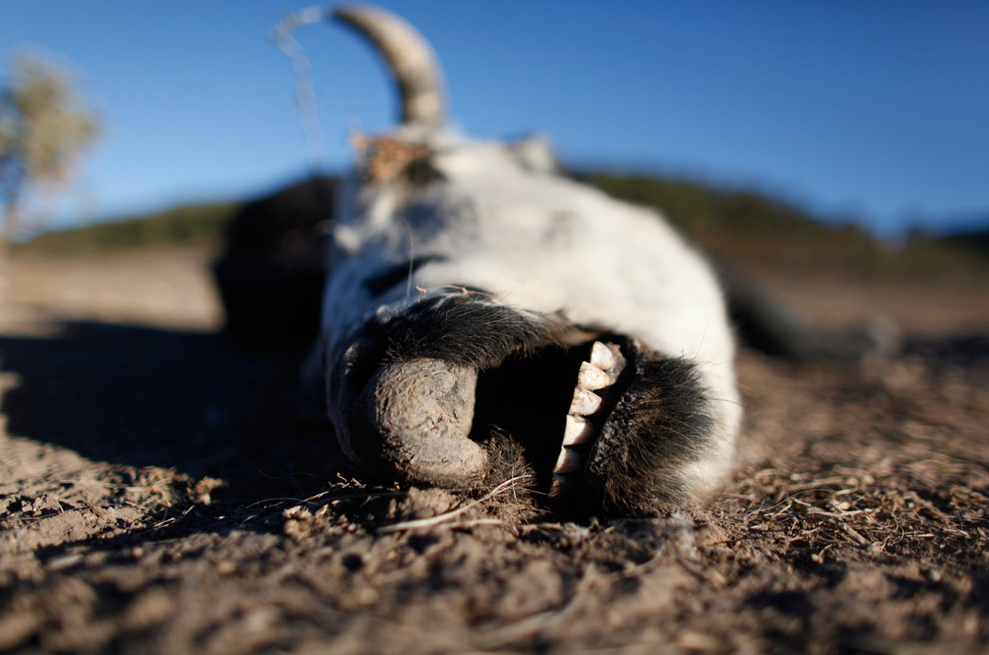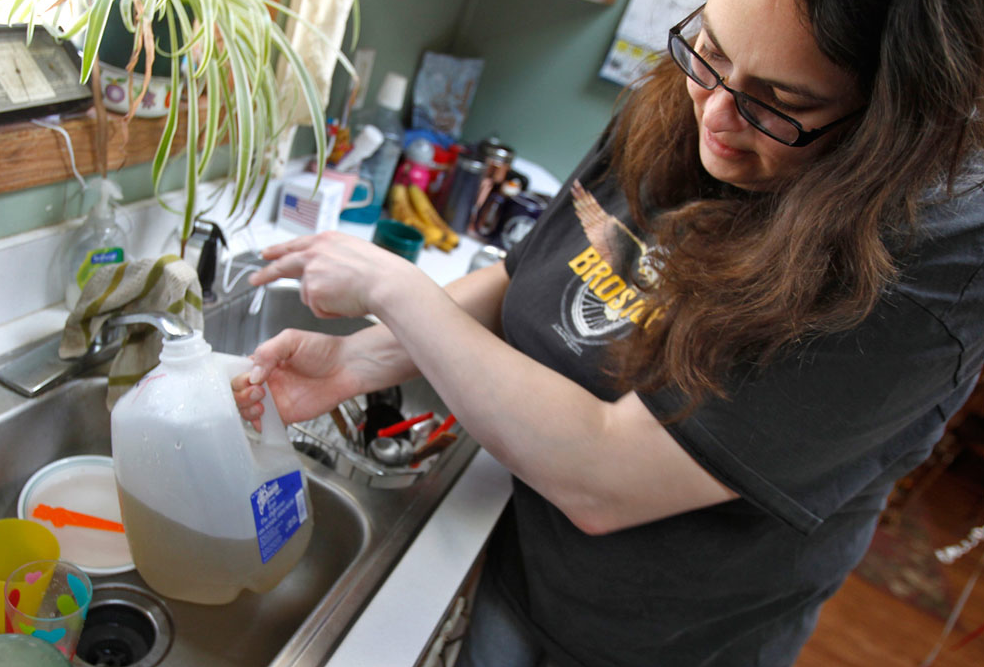With global demand on oil at an all time high and with the current volatility in the Middle East it is not hard to understand why oil is understood as the natural resource most likely to lead to increasingly pronounced international instabilities, including war and terrorist activities, in the coming years. And yet there is an equal if not more serious global scarcity facing us: a shortage of fresh water. The problem seems to exist primarily outside of the U.S., as indicated in the photograph of a cow carcas from Mexico which is suffering its worst drought in 70 years, though the Drought Mitigation Center reports that 12% of the U.S. experienced “exceptional drought conditions” in the summer of 2011 and more than 40% of all states faced abnormal dryness or drought.
Photographs of carcasses are something of a visual trope for drought conditions, and images like the one above are numerous. Collectively, they function as a spectacle that directs attention to the sense that drought is the major problem that faces us with respect to water shortages, and given the effects of recent global warming patterns it is not an altogether unreasonable concern. But equally problematic—and maybe more so—is the more invisible, and thus less spectacular, “slow violence” produced by usage patterns that place stress upon both ecosystems and socio-economic relations. It is notable, for example, that the average U.S. citizen is responsible for the consumption of 2,000 gallons of water a day, twice the amount of most citizens in other parts of the world, and that a pound of beef—a staple of U.S. diets—requires close to 1,800 gallons of water, while a pound of chicken requires approximately 460 gallons of water to produce and a pound of soy beans requires only 216 gallons of water. The effects of such dietary choices on both the ecosystem and worldwide social economies are notable, but of course they defy easy visual representation let alone the spectacle of dead carcasses and dried up and cracked river beds.
Of equal concern are the pollution effects produced by neoliberal economies. Hydraulic fracking is a process used to extract natural gas from reservoir rock formations and shale. It is an effective method for tapping deep natural gas reserves, but it comes at the cost of injecting millions of gallons of chemical-laced water under high pressure into the earth. Notwithstanding the pressure that this places on demand, there is the question of polluting the aquifer and in particular of contaminating private wells and reservoirs with high levels of benzene, a known carcinogen. The issue is currently being contested by the natural gas industry and the EPA but clearly part of the problem is how does one know the problem when one sees it?
Perhaps the answer is to just look! Take for example the photograph above of a woman in western Pennsylvania who fears that her water has been contaminated by a nearby natural gas drilling operation. State officials report that tests show the water to be safe, and the local gas company which had been delivering drinking water to local households has indicated that they will no longer be making such deliveries. And perhaps they are right, though judging from what we can see coming out of the tap I’d be inclined to invite them over one afternoon for a tall cool drink of tap water to discuss it. The resulting photo op might not prove to be spectacular in the manner of a dead carcass, but it might nevertheless make the point.
Photo Credit: Stringer/Reuters; Keith Srakocic/AP


Discussion